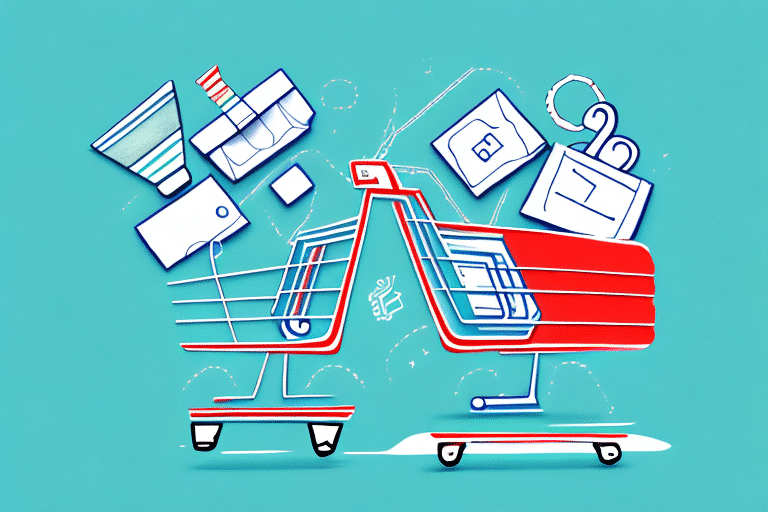7 Proven Cart Abandonment Strategies to Increase Your Conversion Rate
Cart abandonment remains a significant challenge for e-commerce businesses, with recent studies indicating that the average abandonment rate hovers around 70%. This means that seven out of ten shoppers leave their carts without completing a purchase, directly impacting your conversion rate and revenue. However, by implementing effective strategies and utilizing the right tools, you can mitigate cart abandonment and transform it into an opportunity for growth. In this article, we explore seven proven strategies to reduce cart abandonment and boost your conversion rates.
1. Understand Why Cart Abandonment Happens
Cart abandonment occurs when customers add items to their shopping carts but exit the site without completing the purchase. Several factors contribute to this behavior:
- Unexpected Costs: Additional fees like shipping, taxes, or handling charges can deter customers.
- Complicated Checkout Process: Lengthy or confusing checkout procedures can frustrate shoppers.
- Lack of Trust: Concerns about payment security or product quality may cause hesitation.
- Forced Account Creation: Requiring customers to create an account before purchasing can be a barrier.
Understanding these pain points is crucial for developing strategies to address them effectively.
2. Optimize the Checkout Process
Simplify Checkout Steps
A streamlined checkout process enhances user experience and reduces friction. Consider the following:
- Guest Checkout: Allow customers to make purchases without creating an account.
- Progress Indicators: Show a clear checkout progression to keep customers informed.
- Minimize Form Fields: Request only essential information to expedite the process.
Offer Multiple Payment Options
Providing a variety of payment methods caters to different customer preferences. Options may include:
- Credit and debit cards
- PayPal
- Apple Pay
- Google Pay
- Buy Now, Pay Later services like Klarna or Afterpay
Offering diverse payment options can significantly reduce abandonment rates by accommodating different user preferences.
3. Implement Retargeting Strategies
Use Retargeting Ads
Retargeting ads remind visitors of the products they left in their carts, encouraging them to return and complete their purchase. Platforms like Google Ads and Facebook Ads offer robust retargeting options that can be tailored to specific user behaviors.
Email Remarketing
Sending personalized follow-up emails to users who abandoned their carts can be highly effective. Ensure your emails include:
- A reminder of the items left in the cart
- Incentives like discount codes or free shipping
- Clear calls-to-action to return to the cart
According to Shopify, email remarketing can recover up to 10-15% of abandoned carts.
4. Offer Incentives and Discounts
Incentives can motivate customers to finalize their purchases. Consider offering:
- Discount Codes: Provide a percentage or fixed amount off their purchase.
- Free Shipping: Eliminate shipping costs to make the offer more attractive.
- Limited-Time Offers: Create a sense of urgency with time-sensitive discounts.
These incentives not only encourage completion of the current purchase but can also enhance customer loyalty.
5. Enhance Trust with Clear Policies
Transparent Shipping Information
Clearly display shipping costs, delivery times, and available shipping options. Transparency helps set accurate expectations and reduces the likelihood of cart abandonment due to unexpected fees.
Comprehensive Return Policy
A user-friendly return policy can reassure customers about the quality of your products and the ease of returns. Ensure your policy is easy to find and understand.
6. Utilize Live Chat and Customer Support
Integrating live chat or responsive customer support can address customer concerns in real-time, preventing abandonment. By providing immediate assistance, you can help resolve issues that might otherwise deter a purchase.
- Live Chat: Offer instant help during the shopping process.
- Chatbots: Provide 24/7 assistance for common queries.
- Responsive Email Support: Ensure timely responses to customer inquiries.
7. Analyze and Optimize Continuously
Regularly analyzing cart abandonment data is essential for identifying patterns and opportunities for improvement. Focus on metrics such as:
- Cart Abandonment Rate
- Conversion Rate
- Average Order Value
- Customer Lifetime Value
Utilize tools like Google Analytics or Hotjar to gain insights into user behavior and optimize your strategies accordingly.
Best Practices for Implementing Effective Cart Abandonment Strategies
- Prioritize User Experience: Ensure your website is user-friendly and mobile-optimized.
- Personalize Communication: Tailor messages based on user behavior and preferences.
- Test and Iterate: Continuously test different strategies to identify what works best for your audience.
- Leverage Data: Use data-driven insights to inform your strategies and make informed decisions.
Case Studies: Successful Cart Abandonment Reduction
Numerous businesses have successfully reduced cart abandonment and increased conversion rates through targeted strategies:
- Retailer A: Simplified their checkout process and saw a 12% increase in conversions.
- Retailer B: Implemented an email remarketing campaign with discount incentives, resulting in a 15% recovery of abandoned carts.
- Retailer C: Enhanced their live chat support, which led to a 10% boost in completed purchases.
These case studies highlight the effectiveness of tailored strategies in addressing cart abandonment.
Measuring Success: Tracking the Impact of Your Strategies
To evaluate the effectiveness of your cart abandonment strategies, monitor the following key metrics:
- Conversion Rate: The percentage of visitors who complete a purchase.
- Cart Abandonment Rate: The percentage of carts abandoned before purchase.
- Average Order Value: The average amount spent per transaction.
- Customer Retention Rate: The percentage of repeat customers.
Regular analysis of these metrics allows for continuous optimization and ensures that your strategies remain effective and aligned with your business goals.
Conclusion: Taking Action on Cart Abandonment for Business Growth
Cart abandonment is a prevalent challenge in the e-commerce landscape, but it doesn't have to impede your business growth. By understanding the underlying causes and implementing strategic solutions—such as optimizing the checkout process, utilizing retargeting strategies, offering incentives, enhancing trust through clear policies, leveraging customer support, and continuously analyzing performance—you can significantly reduce cart abandonment rates. Taking proactive steps to address cart abandonment not only improves your conversion rates but also enhances overall customer satisfaction and loyalty, ultimately boosting your bottom line.








